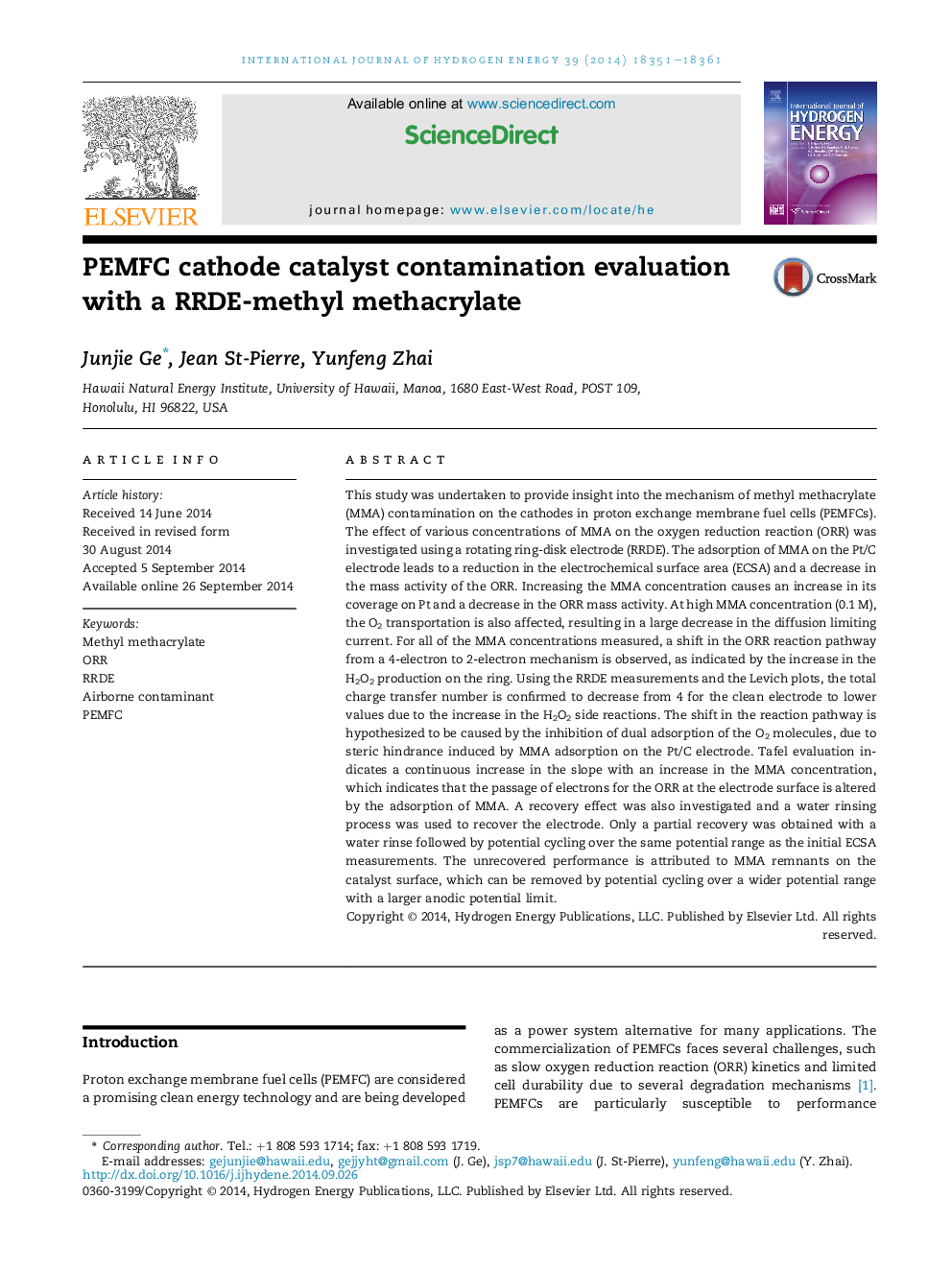| Article ID | Journal | Published Year | Pages | File Type |
|---|---|---|---|---|
| 1280845 | International Journal of Hydrogen Energy | 2014 | 11 Pages |
•The kinetics of the ORR slows down due to the coverage effect and the change in work function of the electrode.•At high MMA concentrations, the mass transfer properties of O2 are also affected.•More H2O2 are produced due to the shift in the reaction pathway.•The Tafel slope increases with increasing concentration of MMA.•Partial recovery was obtained with a rinsing process.
This study was undertaken to provide insight into the mechanism of methyl methacrylate (MMA) contamination on the cathodes in proton exchange membrane fuel cells (PEMFCs). The effect of various concentrations of MMA on the oxygen reduction reaction (ORR) was investigated using a rotating ring-disk electrode (RRDE). The adsorption of MMA on the Pt/C electrode leads to a reduction in the electrochemical surface area (ECSA) and a decrease in the mass activity of the ORR. Increasing the MMA concentration causes an increase in its coverage on Pt and a decrease in the ORR mass activity. At high MMA concentration (0.1 M), the O2 transportation is also affected, resulting in a large decrease in the diffusion limiting current. For all of the MMA concentrations measured, a shift in the ORR reaction pathway from a 4-electron to 2-electron mechanism is observed, as indicated by the increase in the H2O2 production on the ring. Using the RRDE measurements and the Levich plots, the total charge transfer number is confirmed to decrease from 4 for the clean electrode to lower values due to the increase in the H2O2 side reactions. The shift in the reaction pathway is hypothesized to be caused by the inhibition of dual adsorption of the O2 molecules, due to steric hindrance induced by MMA adsorption on the Pt/C electrode. Tafel evaluation indicates a continuous increase in the slope with an increase in the MMA concentration, which indicates that the passage of electrons for the ORR at the electrode surface is altered by the adsorption of MMA. A recovery effect was also investigated and a water rinsing process was used to recover the electrode. Only a partial recovery was obtained with a water rinse followed by potential cycling over the same potential range as the initial ECSA measurements. The unrecovered performance is attributed to MMA remnants on the catalyst surface, which can be removed by potential cycling over a wider potential range with a larger anodic potential limit.
